Results 1 to 10 of 16
-
07-03-2016, 09:37 AM #1
 Restoring an Iwasaki Tamahagane Western Razor
Restoring an Iwasaki Tamahagane Western Razor
Iwasaki razors are without a doubt among the best razors ever produced. I love the skill and craftsmanship of Iwasaki razors.
With respect to this masterwork I hesitate for a while to take hands on this Iwasaki western razor no. 1816.2, since the restoration was mainly based on aesthetic issues (and of course some practical shaving issues) but was not essentially necessary because of defects or rust or anything serious.
I don’t know why, but it seems that a lot of razors you can find in Japan are seriously worn out by honing mainly on the toe of the razor.
So this one arrived at me in the following condition:
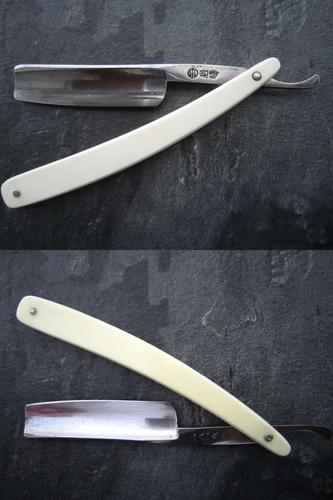
The two problematic zones caused by the excessive hone wear at the toe are the spine and the edge.
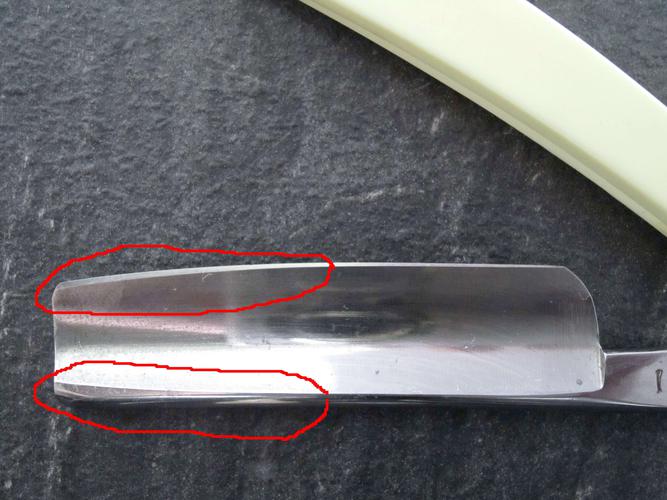
I decided to do a small local regrind to correct the line of the spine:
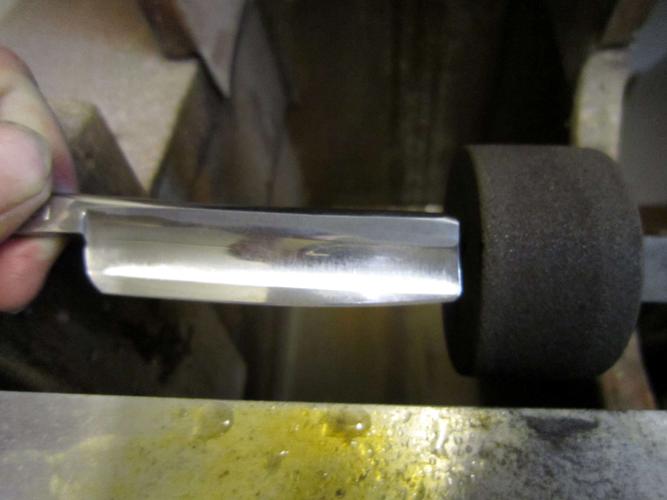
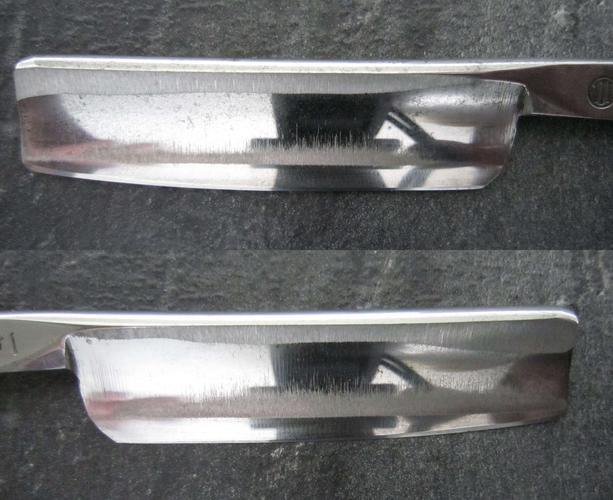
Next step is what is called “Pliesten” in Solingen/ Germany. I don’t know if there is a correct or at least -any translation- for this operation in English. Pliesten describes a process in between grinding and polishing. Whereas grinding is a stock-removing process that needs abrasive materials, mainly in form of grinding stones and discs of natural or artificial material, polishing is strongly defined as an operation without the usage of abrasive materials. Pliesten is in between these two processes, using abrasive grinding powder –traditionally in form of emery, today mostly artificial corundum or diamond powder, which is glued to wood or felt discs.
I used original old mined Naxos emery for this step.
With different emery grades, from middle to very fine the metal surface is refined.
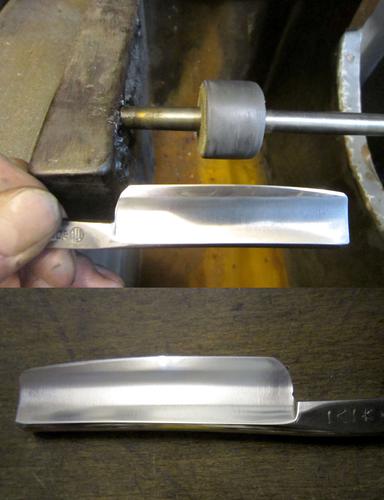
The razor tang has been pliested with fine emery on a disk with larger diameter.
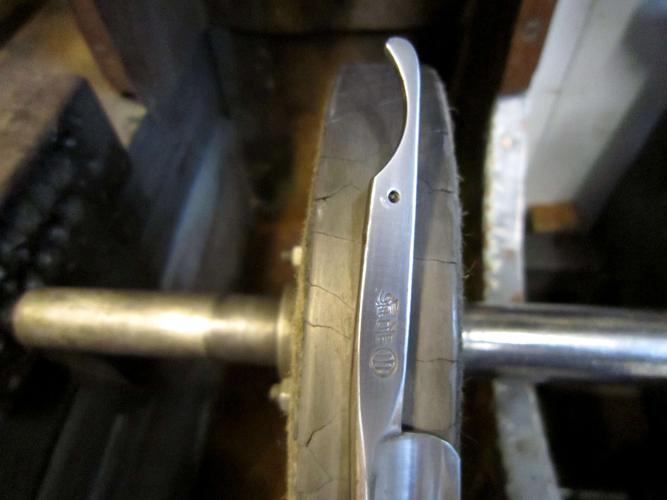
........
-
07-03-2016, 09:42 AM #2

......
The correction of the edge was done on a special ancient plate honing machine that I already introduced I another SRP thread.
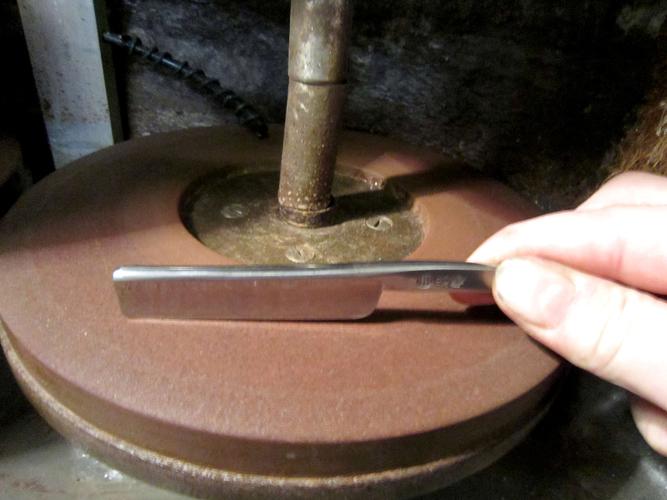
I did not do a total correction - just so far that the disproportion of the blade width between toe and heel does not affect shaving and the overall look doesn’t offend the eyes.
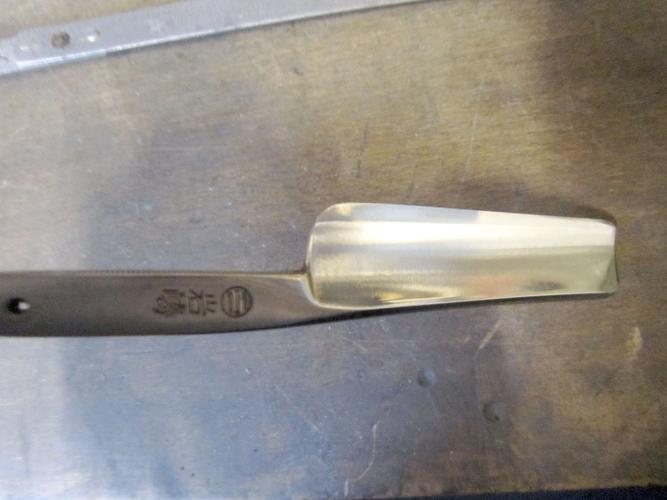
After setting the new bevel the blade was polished with wheels and by hand at the last stage.
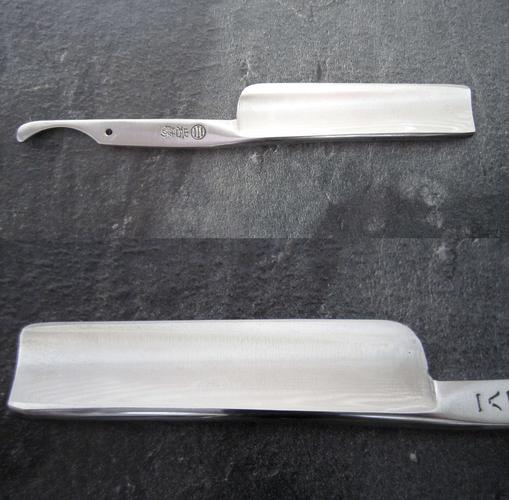
One of the old scales had a crack so I decided to spend some new scales in wood look.
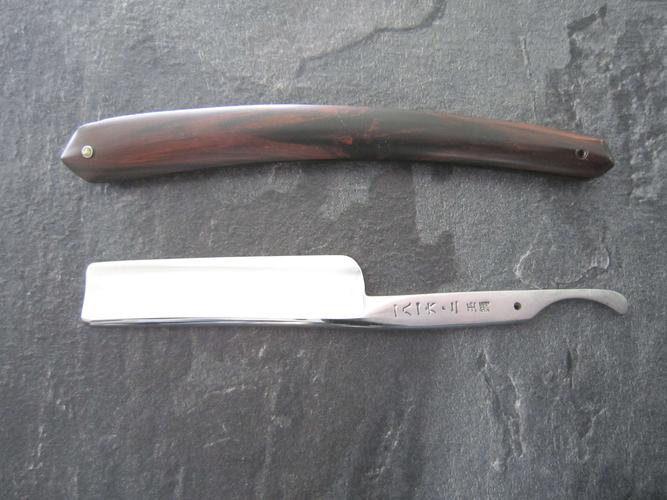
Honing of the razors was finally done on an Artaunon quartzite stone, which is simply perfect to hone especially these very hard razors.
First shave after restoration today was fantastic!
Iwasaki before/ after restauration:
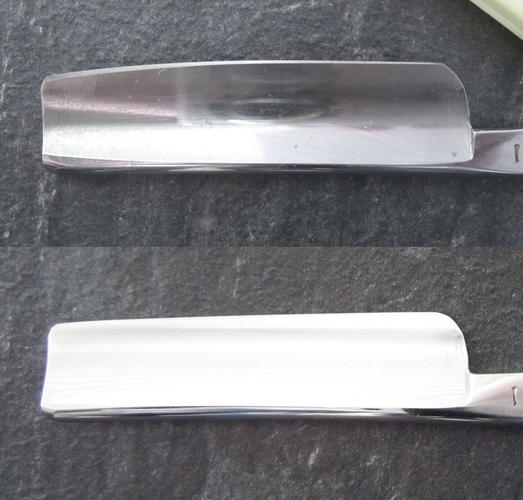
I really love those Iwasakis!
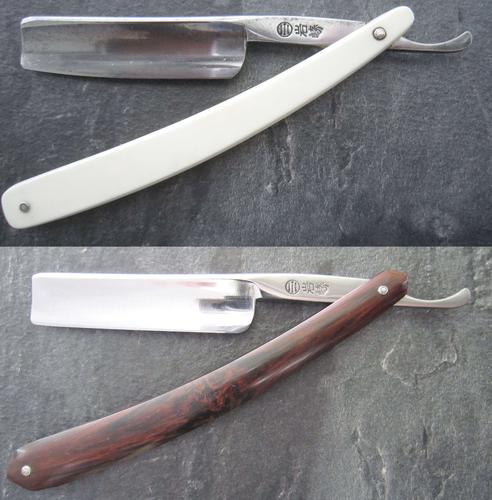
-
The Following 18 Users Say Thank You to hatzicho For This Useful Post:
BobH (07-03-2016), celticcrusader (07-03-2016), Chevhead (07-09-2016), CZMark (07-03-2016), evnpar (07-03-2016), Geezer (07-03-2016), Hacker7 (07-03-2016), karlej (07-03-2016), Maarten (07-03-2016), mainaman (07-03-2016), Martin103 (07-03-2016), Phrank (07-09-2016), Rockabillyhelge (07-03-2016), rolodave (07-03-2016), Thug (07-03-2016), tintin (07-03-2016), vileru (07-03-2016), Wirm (07-03-2016)
-
07-03-2016, 10:02 AM #3

Excellent work I really like it, couple of questions though. First what did you do to keep it cool during this process so that you didn't ruin the temper since you were using power tools? An second in the finished pics it looks like it's still narrow (very slight) in the toe still is it just an illusion or did you leave it this way so that you didn't have to remove to much?
-
07-03-2016, 10:38 AM #4

Well, the grinding is always done wet.
During the Pliest- and polishng process a special paste of oil/emery mixture and tallow is applicated to the blade or polishing wheel. That helps polishing and takes away the heat.
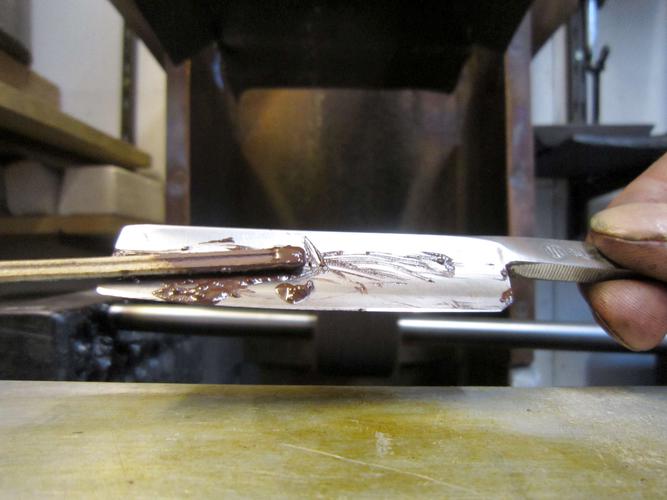
Beside that I always have a glass of water standing nearby in which the razor is dipped and cooled from time to time.
As already mentioned above I did not do a total correction of the bevel, so it still is a bit narrow. That doesn't effect shaving in my opinion and I didn't want to remove more material than really necessary.
-
07-03-2016, 10:50 AM #5

Excellent restoration and a great razor. Where did you find the vintage equipment?
-
07-03-2016, 11:35 AM #6

Well I met an old german grinder that had already retired years ago. He tought me how to hollow-grind and prepare straight razors. I finally bought his whole workshop which his grand-grandfather openend in 1869, dismanteled the old machinery and rebuild the workshop exactly as it was before at my home.
Every year I travel for some days through Germany to meet old grinders and learn from them and buy parts of their equipment.
-
-
07-03-2016, 11:49 AM #7

i find this very fascinating and am in awe of your skill. very nice job on the restoration. I have a few razors that could use some one with your skill.
-
07-03-2016, 03:32 PM #8

Thanks for taking the time to photograph and demonstrate the steps involved. You did a beautiful job on this wonderful razor.
Richard
-
07-03-2016, 03:50 PM #9

Congratulations on a wonderful blade correction/restoration. Well done.
Tony
-
07-03-2016, 04:20 PM #10

Thank you for the tutorial and your opinions!
~Richard
I just found one of my 5/8ths+ Ducks with a visitor damaged toe. Thanks for the tips, they will help!!Last edited by Geezer; 07-03-2016 at 09:56 PM.
Be yourself; everyone else is already taken.
- Oscar Wilde


 70Likes
70Likes LinkBack URL
LinkBack URL About LinkBacks
About LinkBacks






 Reply With Quote
Reply With Quote





